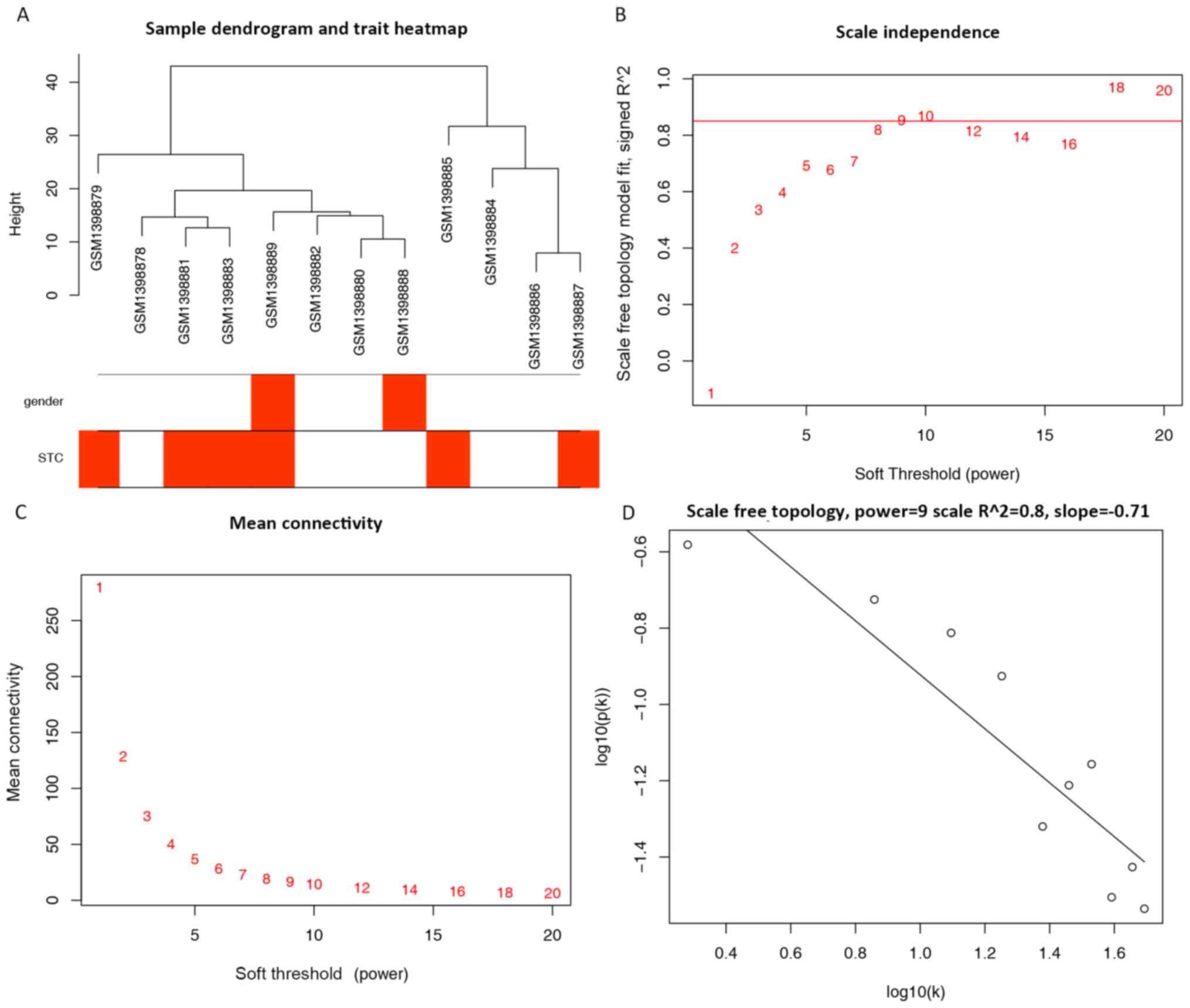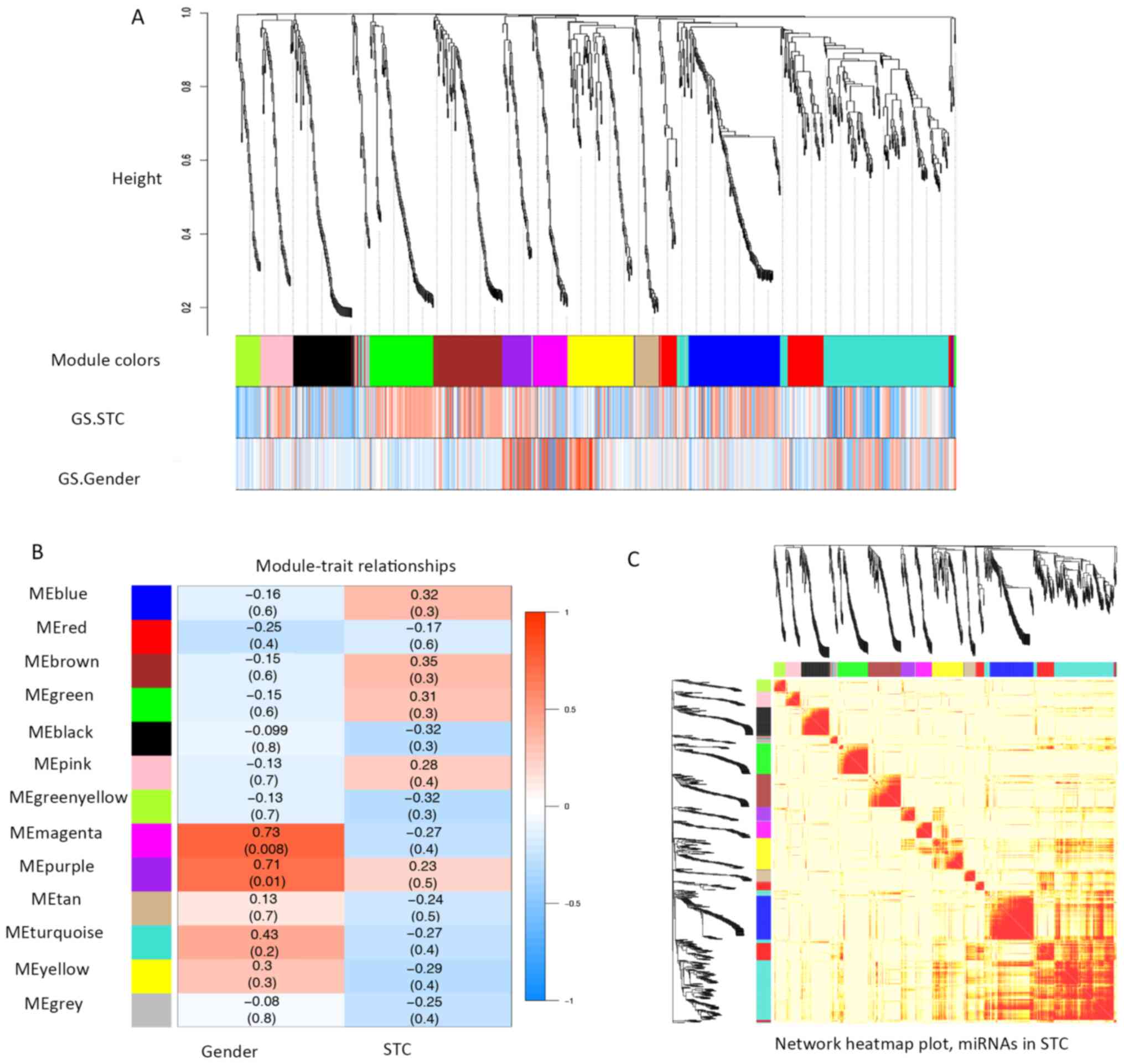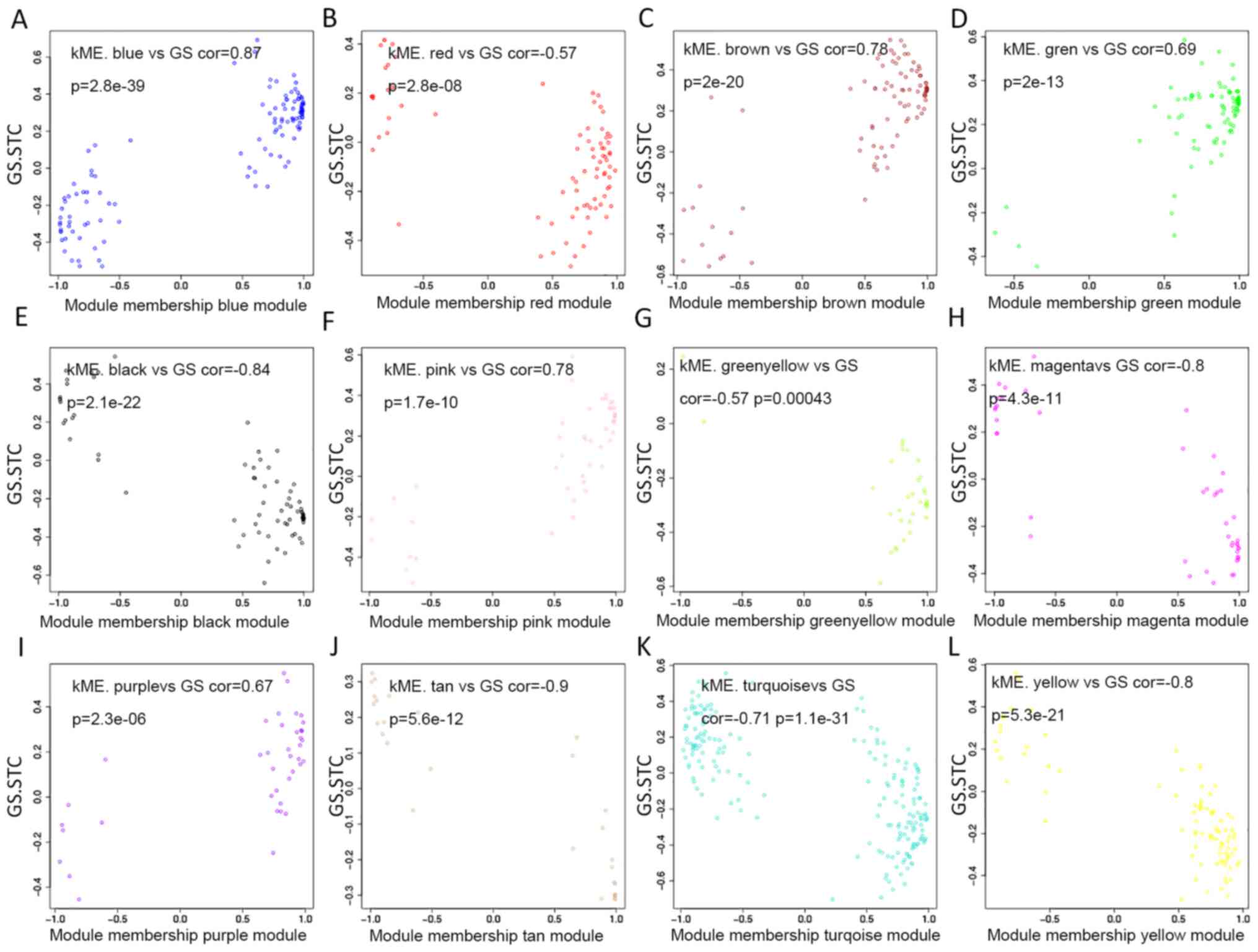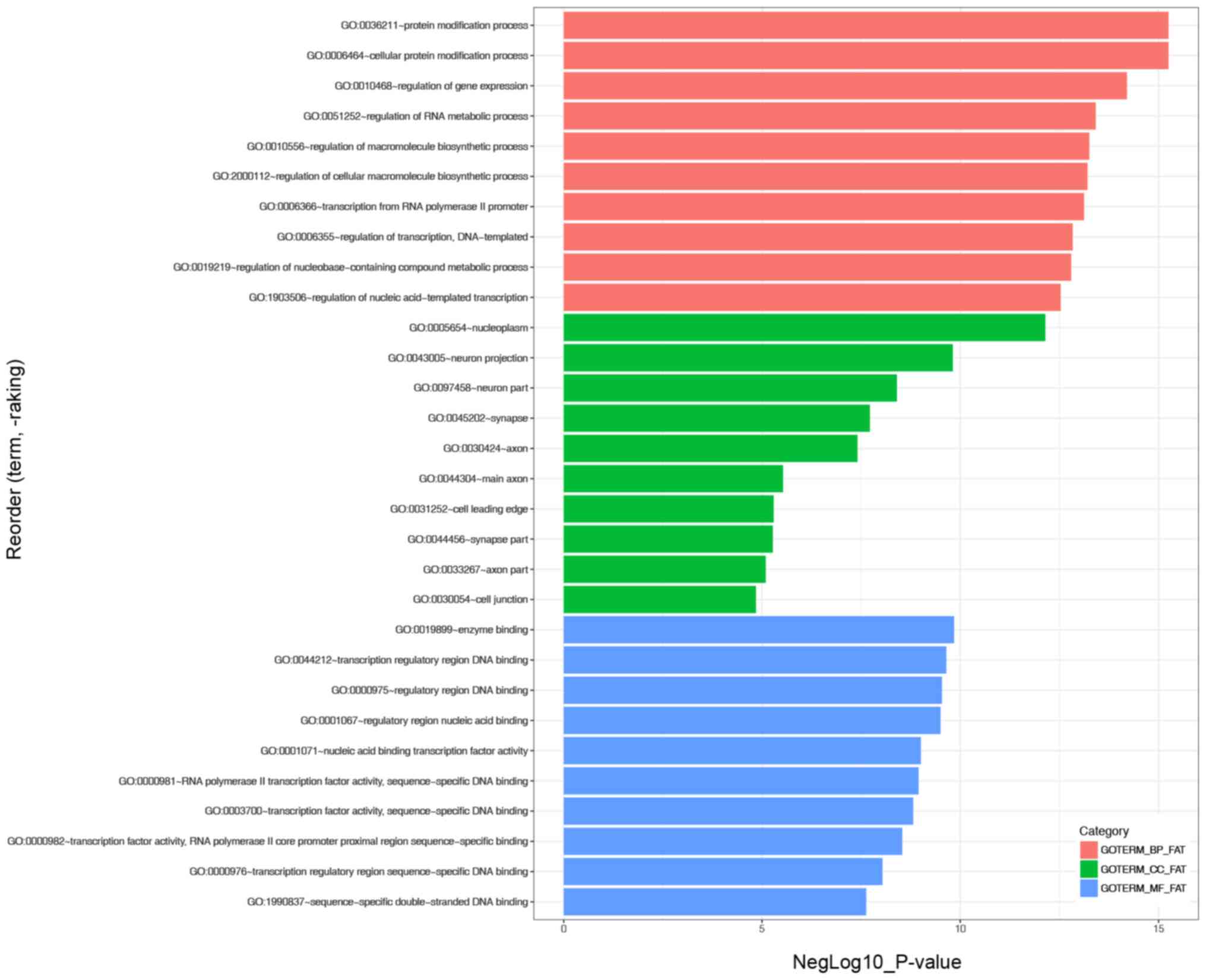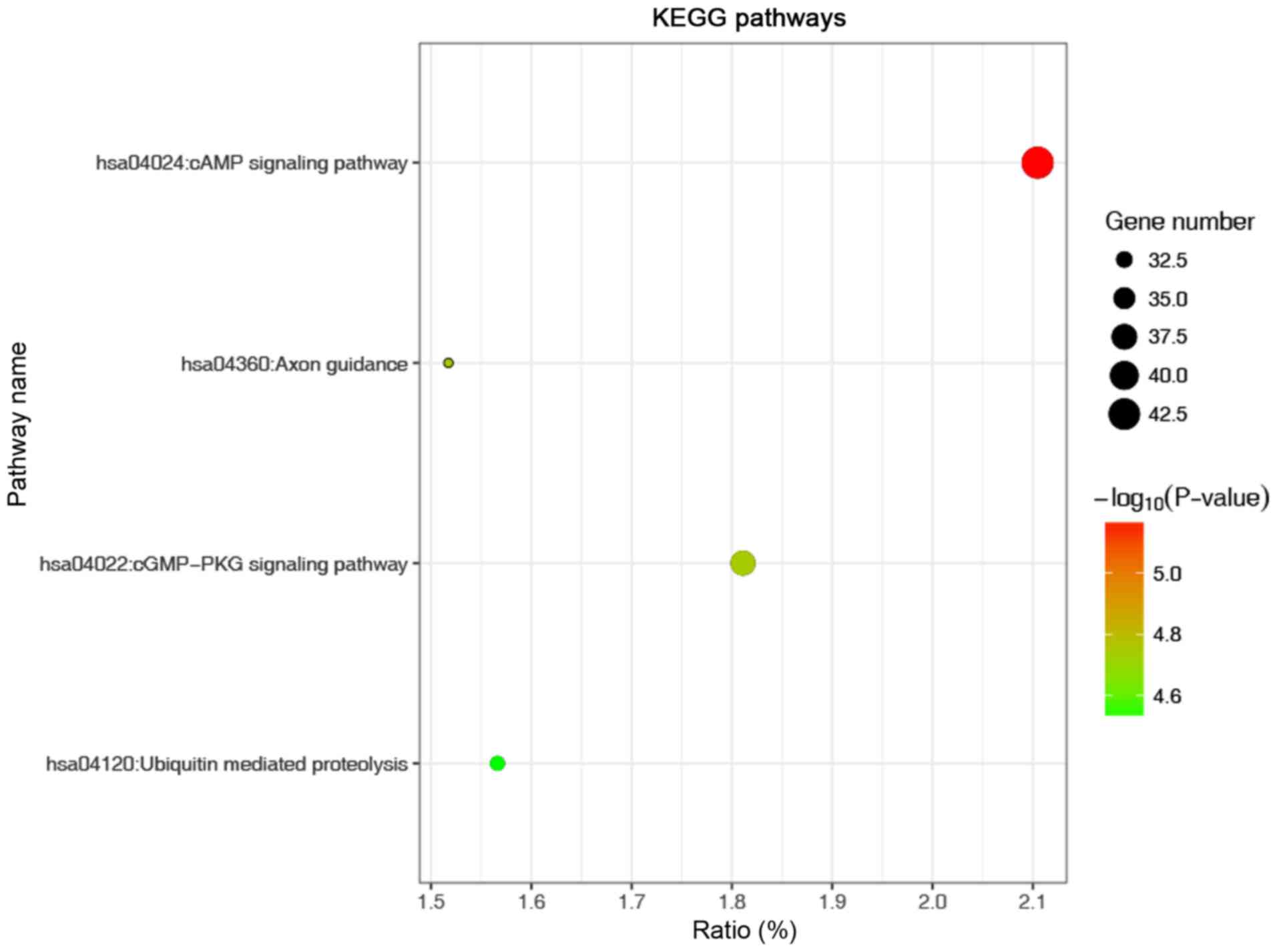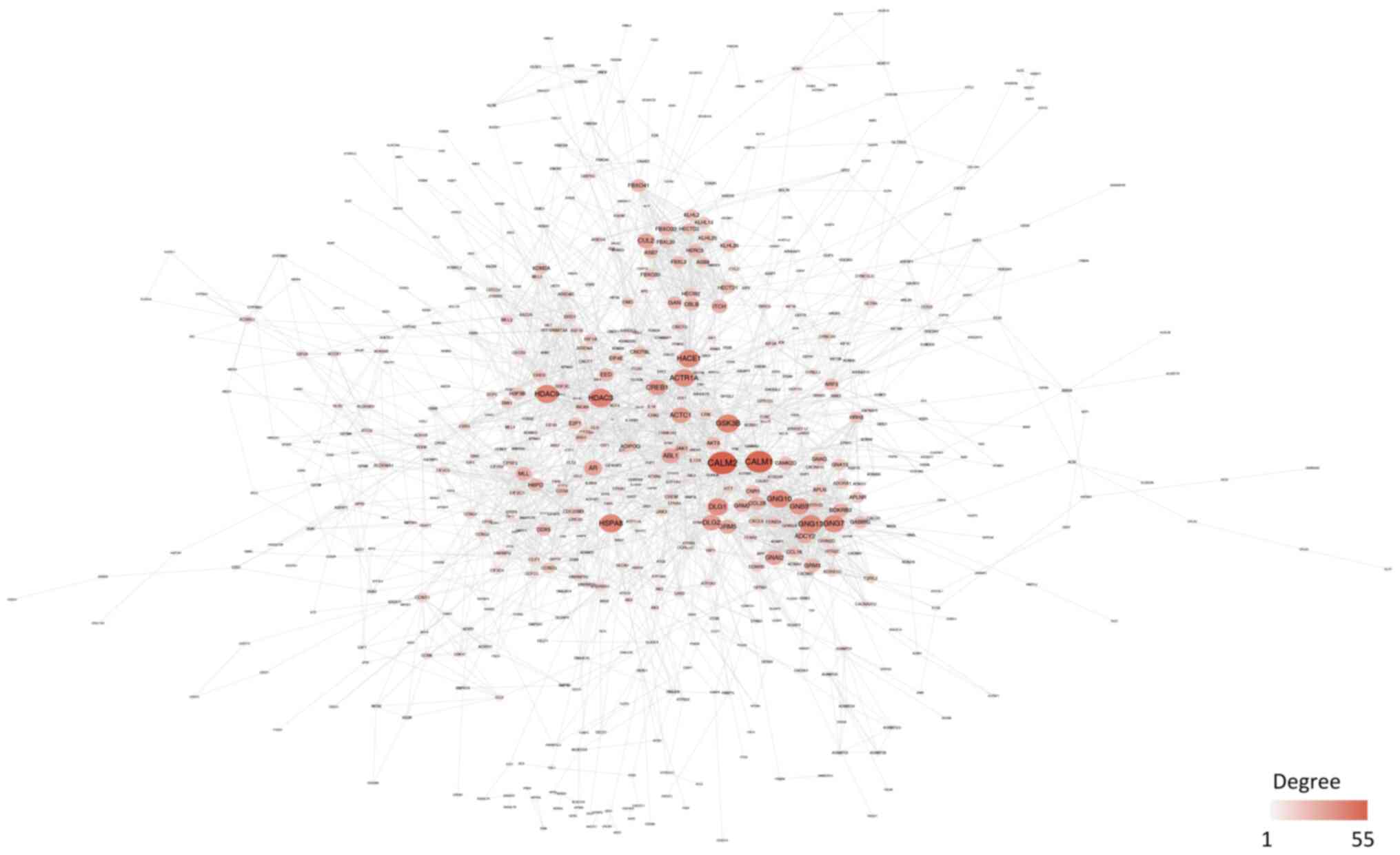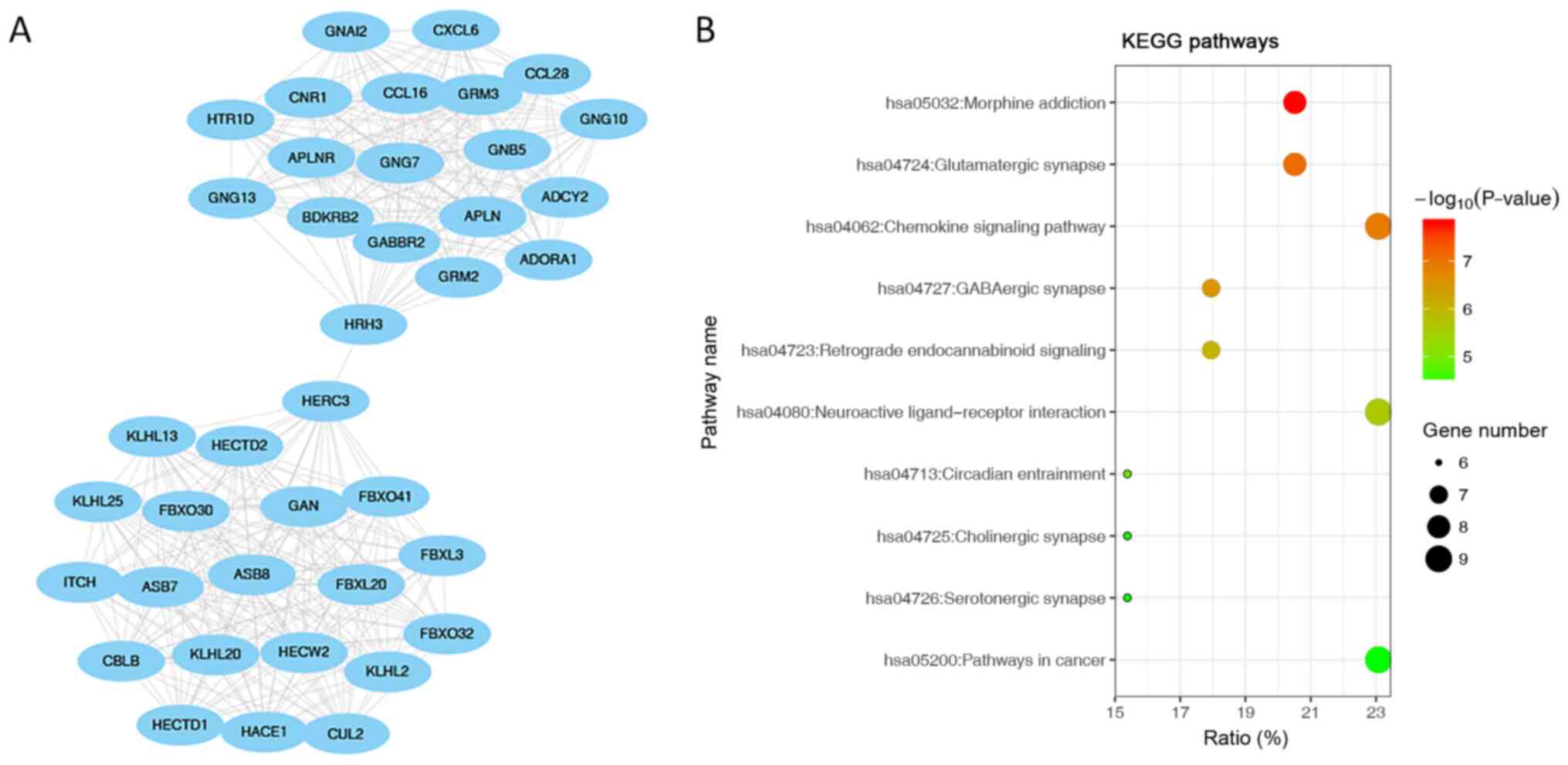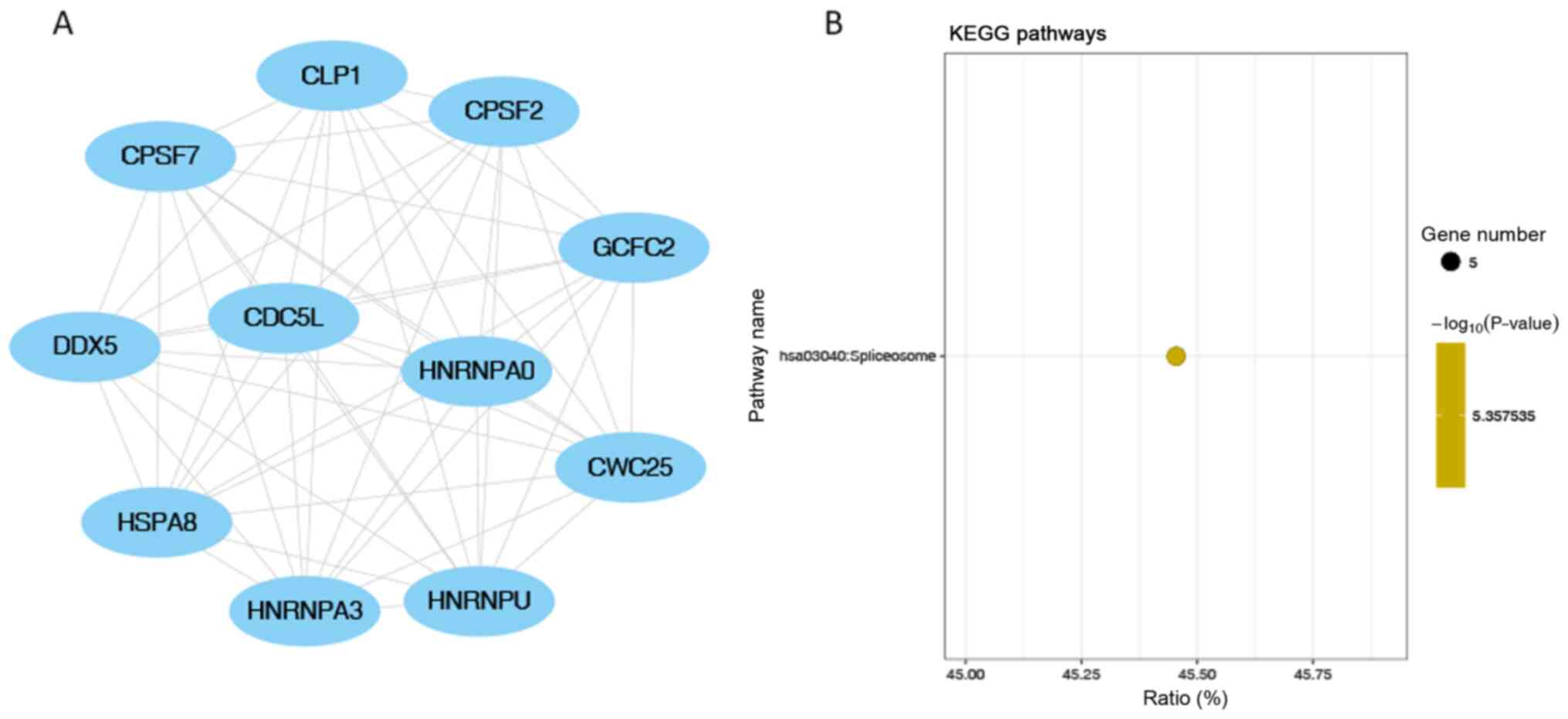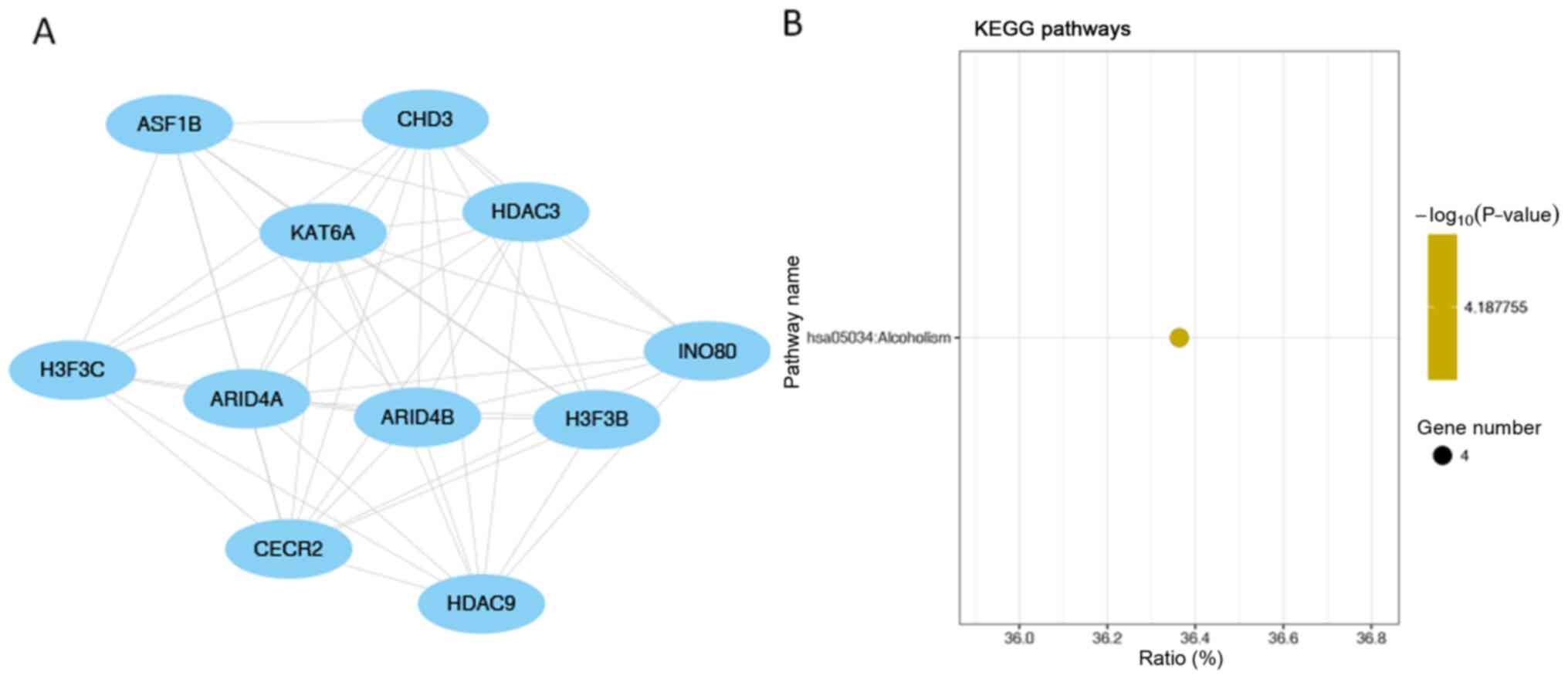|
1
|
Pare P, Ferrazzi S, Thompson WG, Irvine EJ
and Rance L: An epidemiological survey of constipation in Canada:
Definitions, rates, demographics, and predictors of health care
seeking. Am J Gastroenterol. 96:3130–3137. 2001. View Article : Google Scholar : PubMed/NCBI
|
|
2
|
Lembo A and Camilleri M: Chronic
constipation. N Engl J Med. 349:1360–1368. 2003. View Article : Google Scholar : PubMed/NCBI
|
|
3
|
Sonnenberg A and Koch TR: Physician visits
in the United States for constipation: 1958 to 1986. Dig Dis Sci.
34:606–611. 1989. View Article : Google Scholar : PubMed/NCBI
|
|
4
|
Heaton KW, Radvan J, Cripps H, Mountford
RA, Braddon FE and Hughes AO: Defecation frequency and timing, and
stool form in the general population: A prospective study. Gut.
33:818–824. 1992. View Article : Google Scholar : PubMed/NCBI
|
|
5
|
Preston DM and Lennard-Jones JE: Severe
chronic constipation of young women: ‘Idiopathic slow transit
constipation’. Gut. 27:41–48. 1986. View Article : Google Scholar : PubMed/NCBI
|
|
6
|
Rao SS and Go JT: Update on the management
of constipation in the elderly: New treatment options. Clin Interv
Aging. 5:163–171. 2010. View Article : Google Scholar : PubMed/NCBI
|
|
7
|
Portalatin M and Winstead N: Medical
management of constipation. Clin Colon Rectal Surg. 25:12–19. 2012.
View Article : Google Scholar : PubMed/NCBI
|
|
8
|
Karlbom U, Påhlman L, Nilsson S and Graf
W: Relationships between defecographic findings, rectal emptying,
and colonic transit time in constipated patients. Gut. 36:907–912.
1995. View Article : Google Scholar : PubMed/NCBI
|
|
9
|
Prather CM: Subtypes of constipation:
Sorting out the confusion. Rev Gastroenterol Disord. 4 (Suppl
2):S11–S16. 2004.PubMed/NCBI
|
|
10
|
Mertz H, Naliboff B and Mayer E:
Physiology of refractory chronic constipation. Am J Gastroenterol.
94:609–615. 1999. View Article : Google Scholar : PubMed/NCBI
|
|
11
|
Tzavella K, Riepl RL, Klauser AG,
Voderholzer WA, Schindlbeck NE and Müller-Lissner SA: Decreased
substance P levels in rectal biopsies from patients with slow
transit constipation. Eur J Gastroenterol Hepatol. 8:1207–1211.
1996. View Article : Google Scholar : PubMed/NCBI
|
|
12
|
Cortesini C, Cianchi F, Infantino A and
Lise M: Nitric oxide synthase and VIP distribution in enteric
nervous system in idiopathic chronic constipation. Dig Dis Sci.
40:2450–2455. 1995. View Article : Google Scholar : PubMed/NCBI
|
|
13
|
He CL, Burgart L, Wang L, Pemberton J,
Young-Fadok T, Szurszewski J and Farrugia G: Decreased interstitial
cell of Cajal volume in patients with slow-transit constipation.
Gastroenterology. 118:14–21. 2000. View Article : Google Scholar : PubMed/NCBI
|
|
14
|
Grover M, Farrugia G, Lurken MS, Bernard
CE, Faussone-Pellegrini MS, Smyrk TC, Parkman HP, Abell TL, Snape
WJ, Hasler WL, et al: Cellular changes in diabetic and idiopathic
gastroparesis. Gastroenterology. 140:1575–1585.e8. 2011. View Article : Google Scholar : PubMed/NCBI
|
|
15
|
Yanaihara N, Caplen N, Bowman E, Seike M,
Kumamoto K, Yi M, Stephens RM, Okamoto A, Yokota J, Tanaka T, et
al: Unique microRNA molecular profiles in lung cancer diagnosis and
prognosis. Cancer Cell. 9:189–198. 2006. View Article : Google Scholar : PubMed/NCBI
|
|
16
|
Ferracin M, Veronese A and Negrini M:
Micromarkers: miRNAs in cancer diagnosis and prognosis. Expert Rev
Mol Diagn. 10:297–308. 2010. View Article : Google Scholar : PubMed/NCBI
|
|
17
|
Liu W, Zhang Q, Li S, Li L, Ding Z, Qian
Q, Fan L and Jiang C: The relationship between colonic macrophages
and microRNA-128 in the pathogenesis of slow transit constipation.
Dig Dis Sci. 60:2304–2315. 2015. View Article : Google Scholar : PubMed/NCBI
|
|
18
|
Zhang B and Horvath S: A general framework
for weighted gene co-expression network analysis. Stat Appl Genet
Mol Biol. 4:Article172005. View Article : Google Scholar : PubMed/NCBI
|
|
19
|
Langfelder P and Horvath S: WGCNA: An R
package for weighted correlation network analysis. BMC
Bioinformatics. 9:5592008. View Article : Google Scholar : PubMed/NCBI
|
|
20
|
Edgar R, Domrachev M and Lash AE: Gene
expression omnibus: NCBI gene expression and hybridization array
data repository. Nucleic Acids Res. 30:207–210. 2002. View Article : Google Scholar : PubMed/NCBI
|
|
21
|
Davis S and Meltzer PS: GEOquery: A bridge
between the Gene Expression Omnibus (GEO) and BioConductor.
Bioinformatics. 23:1846–1847. 2007. View Article : Google Scholar : PubMed/NCBI
|
|
22
|
R Core Team. R: A language and environment
for statistical computing. R Foundation for Statistical Computing;
Vienna, Austria: 2017, simplewww.r-project.orgJune 24–2019
|
|
23
|
Ravasz E, Somera AL, Mongru DA, Oltvai ZN
and Barabási AL: Hierarchical organization of modularity in
metabolic networks. Science. 297:1551–1555. 2002. View Article : Google Scholar : PubMed/NCBI
|
|
24
|
Langfelder P, Zhang B and Horvath S:
Defining clusters from a hierarchical cluster tree: The dynamic
tree cut package for R. Bioinformatics. 24:719–720. 2007.
View Article : Google Scholar : PubMed/NCBI
|
|
25
|
Agarwal V, Bell GW, Nam JW and Bartel DP:
Predicting effective microRNA target sites in mammalian mRNAs.
Elife. 4:e050052015. View Article : Google Scholar
|
|
26
|
Wang X: Improving microRNA target
prediction by modeling with unambiguously identified
microRNA-target pairs from CLIP-Ligation studies. Bioinformatics.
32:1316–1322. 2016. View Article : Google Scholar : PubMed/NCBI
|
|
27
|
Paraskevopoulou MD, Georgakilas G,
Kostoulas N, Vlachos IS, Vergoulis T, Reczko M, Filippidis C,
Dalamagas T and Hatzigeorgiou AG: DIANA-microT web server v5.0:
Service integration into miRNA functional analysis workflows.
Nucleic Acids Res. 41:W169–W173. 2013. View Article : Google Scholar : PubMed/NCBI
|
|
28
|
Ashburner M, Ball CA, Blake JA, Botstein
D, Butler H, Cherry JM, Davis AP, Dolinski K, Dwight SS, Eppig JT,
et al: Gene Ontology: Tool for the unification of biology. Nat
Genet. 25:25–29. 2000. View
Article : Google Scholar : PubMed/NCBI
|
|
29
|
Kanehisa M and Goto S: KEGG: Kyoto
encyclopedia of genes and genomes. Nucleic Acids Res. 28:27–30.
2000. View Article : Google Scholar : PubMed/NCBI
|
|
30
|
Huang DW, Sherman BT and Lempicki RA:
Systematic and integrative analysis of large gene lists using DAVID
bioinformatics resources. Nature Protoc. 4:44–57. 2009. View Article : Google Scholar
|
|
31
|
Rouillard AD, Gundersen GW, Fernandez NF,
Wang Z, Monteiro CD, McDermott MG and Ma'ayan A: The harmonizome: A
collection of processed datasets gathered to serve and mine
knowledge about genes and proteins. Database (Oxford).
2016:baw1002016. View Article : Google Scholar : PubMed/NCBI
|
|
32
|
Szklarczyk D, Franceschini A, Wyder S,
Forslund K, Heller D, Huerta-Cepas J, Simonovic M, Roth A, Santos
A, Tsafou KP and Kuhn M: STRING v10: Protein-protein interaction
networks, integrated over the tree of life. Nucleic Acids Res.
43:D447–D452. 2014. View Article : Google Scholar : PubMed/NCBI
|
|
33
|
Shannon P, Markiel A, Ozier O, Baliga NS,
Wang JT, Ramage D, Amin N, Schwikowski B and Ideker T: Cytoscape: A
software environment for integrated models of biomolecular
interaction networks. Genome Res. 13:2498–2504. 2003. View Article : Google Scholar : PubMed/NCBI
|
|
34
|
Bader GD and Hogue CW: An automated method
for finding molecular complexes in large protein interaction
networks. BMC Bioinformatics. 4:22003. View Article : Google Scholar : PubMed/NCBI
|
|
35
|
Wedel T, Spiegler J, Soellner S, Roblick
UJ, Schiedeck TH, Bruch HP and Krammer HJ: Enteric nerves and
interstitial cells of Cajal are altered in patients with
slow-transit constipation and megacolon. Gastroenterology.
123:1459–1467. 2002. View Article : Google Scholar : PubMed/NCBI
|
|
36
|
Knowles CH, Scott M and Lunniss PJ:
Outcome of colectomy for slow transit constipation. Ann Surg.
230:6271999. View Article : Google Scholar : PubMed/NCBI
|
|
37
|
Chiarioni G, Salandini L and Whitehead WE:
Biofeedback benefits only patients with outlet dysfunction, not
patients with isolated slow transit constipation. Gastroenterology.
129:86–97. 2005. View Article : Google Scholar : PubMed/NCBI
|
|
38
|
Chin D and Means AR: Calmodulin: A
prototypical calcium sensor. Trends Cell Biol. 10:322–328. 2000.
View Article : Google Scholar : PubMed/NCBI
|
|
39
|
Zavecz JH, Jackson TE, Limp GL and Yellin
TO: Relationship between anti-diarrheal activity and binding to
calmodulin. Eur J Pharmacol. 78:375–377. 1982. View Article : Google Scholar : PubMed/NCBI
|
|
40
|
Deng Y, Han X, Tang S, Xiao W, Tan Z, Zhou
C, Wang M and Kang J: Magnolol and honokiol regulate the
calcium-activated potassium channels signaling pathway in
Enterotoxigenic Escherichia coli-induced diarrhea mice. Eur
J Pharmacol. 755:66–73. 2015. View Article : Google Scholar : PubMed/NCBI
|
|
41
|
Bobin P, Varin A, Lefebvre F, Fischmeister
R, Vandecasteele G and Leroy J: Calmodulin kinase II inhibition
limits the pro-arrhythmic Ca2+ waves induced by
cAMP-phosphodiesterase inhibitors. Cardiovascular Res. 110:151–161.
2016. View Article : Google Scholar
|
|
42
|
Ward SM, Ördög T, Koh SD, Baker SA, Jun
JY, Amberg G, Monaghan K and Sanders KM: Pacemaking in interstitial
cells of Cajal depends upon calcium handling by endoplasmic
reticulum and mitochondria. J Physiol. 525:355–361. 2000.
View Article : Google Scholar : PubMed/NCBI
|
|
43
|
Sanders KM, Koh SD and Ward SM:
Interstitial cells of Cajal as pacemakers in the gastrointestinal
tract. Annu Rev Physiol. 68:307–343. 2006. View Article : Google Scholar : PubMed/NCBI
|
|
44
|
Zhu MH, Kim TW, Ro S, Yan W, Ward SM, Koh
SD and Sanders KM: A Ca2+-activated Cl−
conductance in interstitial cells of Cajal linked to slow wave
currents and pacemaker activity. J Physiol. 587:4905–4918. 2009.
View Article : Google Scholar : PubMed/NCBI
|















